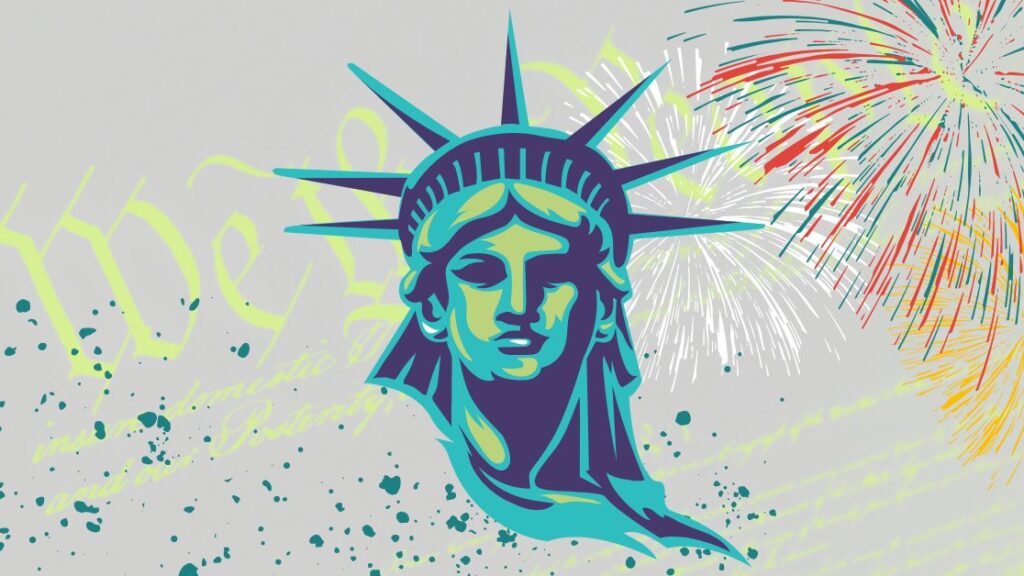The world of social media is constantly evolving, and we’re not just talking about the image or video sizing—although there is a blog for that. This blog will more than likely be outdated the second we post it, but we’re attempting to map out what you can expect or should be preparing for in 2023.
It’s kind of wild, so read on.
Cliff notes: design writing, movement, 90s, not being a d*ck, and darkness.
Visual Storytelling:
Visual storytelling has been around for almost as long as humankind has. Think Lascaux in France, known for it’s cave paintings. While it wasn’t the very first example of visual storytelling, it certainly is a famous one. Visual storytelling is defined as “communicating visually in forms that can be read and/or looked at.” But, it’s a little different when you’re talking marketing and the user journey into consideration. Shlomi Ron, CEO of the Visual Learning Institute defines visual storytelling in marketing as: “A marketing strategy that leverages compelling narratives, placing your customer at the heart of the story, staged with an emotional visual media experience and effectively distributed across your buyer’s journey – in order to empower customers’ lives and drive business results.”
So how does this relate to social media? Pick your phone right now and start scrolling through one of your many social feeds. What does it look like? Does it look messy and overwhelming? Maybe it’s a bit boring? Try to think of the last time you were in the midst of the dreaded doom scroll– what made you slow down, stop, and engage? This is the power of visual storytelling. Social media feeds are already noisy and consumer attention spans are shorter than ever, effectively grabbing their attention isn’t an easy feat. Using more effective visual elements, social media marketers are able to efficiently create and illustrate immersive stories to draw users in, keep them engaged longer, and increasing the chances of them taking action or retaining the information.
Motion Graphics:
Motion Graphics are a powerful form of visual storytelling, which we covered above. There are three kinds:
- Promotional Videos: To help sell a product or service.
- Explainer Videos: To help define a concept, product or service.
- Emotive Videos: Move your audience to feel something.
Utilizing on social media will encourage users to slow down, stop scrolling and actually absorb your message. Keep it brief, today’s attention spans are almost nonexistent. Due to the engaging nature– they’re likely to boost your conversion rates, generate leads, and drive more traffic.
In addition to design flair, motion graphics have been pivotal towards the push towards less intrusive videos served as digital ads. You can add text to your videos or use the power of typography to get your point across.
Social and video are not the only places where you’ll see the power of Motion Graphics harnessed– you can expect to see subtle hints of motion in UX design too.
90’s Nostalgia:
We really thought we left this decade behind, but the baggy jeans, crop tops, oversized flannels, graphic tees and other horrible styles are all back…and lucky for us it’s also bleeding into social media. There are several reasons why this trend has become so popular with art directors and designers today. For starters, many people who grew up in the ‘90s have fond memories of some of their favorite childhood shows or movies, which can evoke strong feelings when seen again. That 90s Show is a great example of this. Additionally, as technology improves and becomes more advanced, there’s an appetite for simpler visuals from the past that modern designs can sometimes lack.
Social Responsibility and Brand Authenticity
This is one of the more important ones. We know, we know, it’s not exactly a new topic (or design related) but here’s the thing, in 2023, customers are going to be all about transparency and authenticity. In fact, Talkwalker, Marketing Interactive, Mediatoolkit, and Finances Online all agree that it’s going to be a big deal. People want to know that brands are doing their part to make the world a better place and aligning with their beliefs.
With all the fake news and greenwashing out there, customers are getting pretty savvy. They’re not going to be fooled by empty promises or lip service. Brands need to step up their game and show that they’re walking the walk.
Dark Mode-Friendly Graphics:
Dark mode has surged in popularity over the years, and with good reason. Dark mode can help reduce eye strain, cut back glare, and limit blue light. As this function becomes more popular across devices, it will present some design challenges for email marketers and web designers.
In the social world, it can provide a new way to curate your content and capture your audience, but not without it’s drawbacks. Some users find that dark mode evokes feelings of emptiness or sadness. Others find that dark mode makes their devices and apps look more sleek. While this presents an interesting opportunity for your brand to stand out, you still need to remain true to your brand.
When designing content for social, you’ll want to keep both light mode and dark mode users in mind. Unfortunately, you won’t have the advantages of coding your content to detect what interface your user is in, enabling you to swap the color of your content. While designing with dark mode in mind can present a fun challenge or aligns with your branding already, that won’t always be the case. At which point we say godspeed and we hope you have good balance.
2023 is shaping up to be a pretty exciting year for social media design. Everything will continue to evolve but we’re crossing our fingers we won’t be seeing the 2000s anytime soon.









